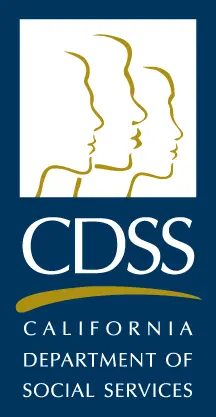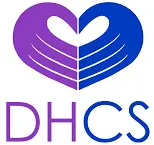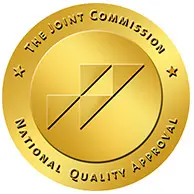Partial Hospitalization Program
In Orange
County
The Path To A Fulfilling Life
Orange County Luxury Residential Mental Health Facilities
If you face mental health challenges, the first step is asking for help. In Orange County, statistics from OC Health Data show that about one in six people need support for mental, emotional, or substance issues. This high number highlights the need for good mental health treatments. One effective option is the Partial Hospitalization Programs (PHPs). These programs offer structured support to help people improve their mental health. With so many in Orange County seeking help, programs like PHPs are essential.
Partial hospitalization programs in Orange County provide many of the same benefits as inpatient programs and intensive outpatient programs (IOPs). Their unique structure encourages patient autonomy, ensuring they can effectively navigate their therapy and treatment. With PHPs, patients embark on their journey to recovery in a supportive, empowering environment rooted in the latest therapeutic modalities and mental health services.
With a suitable mental health facility or institution, PHPs can drastically reduce patient symptoms, preventing relapse or the need for entire hospitalization. Partnering with a renowned mental health institution ensures the treatment is comprehensive and tailored to individual needs.
What is an Orange County PHP Program?
Partial hospitalization programs are outpatient programs designed to prevent relapse and avoid entire hospitalization. These therapy sessions, prevalent in Orange County, serve as a bridge for patients, ensuring they retain the benefits of their mental health treatment while resuming daily life.
PHPs typically begin once a patient has completed residential treatment. Having built a solid mental health foundation, patients can continue their treatment while reintegrating into the community. This seamless transition is a hallmark of recovery, fostering healing and empowerment.
Patients enrolled in PHPs engage in diverse therapeutic modalities, expected to attend these vital sessions regularly. They might reside at home or in supportive housing environments outside of their treatment. This balance ensures they retrieve a sense of normalcy while still accessing the full benefits of a day’s treatment.
PHP sessions generally mirror a work schedule, occurring during the week. The duration can vary, but it’s standard for treatment to span from morning to late afternoon. One distinct advantage of PHPs is the allowance for weekends off. This break offers patients peaceful, free time to recharge, setting the right mindset for the upcoming week’s therapy and treatment.

What do partial hospitalization programs treat?
Partial hospitalization programs in Orange County are dynamic, adaptable solutions crafted to meet the diverse needs of patients. It’s estimated by the World Health Organization that 3.8% of the population experience depression. Access to intensive care like PHPs can help individuals grappling with these mental health disorders. PHPs are equipped to treat an array of mental health disorders and issues, encompassing:
- Anxiety
- Depression
- Mood disorders
- Substance abuse and addiction
- Co-occurring disorders, or dual diagnosis
As structured outpatient programs for mental health maintenance, PHPs balance intensity and flexibility. They are less intense than inpatient treatment but versatile enough to address many mental health challenges.
Returning to a safe, familiar environment every evening accelerates recovery for individuals grappling with mental disorders like anxiety or depression. This comfort is further magnified by regular interactions with a nurturing circle of friends and family, ensuring a holistic recovery process.
PHPs are invaluable for patients whose mental disorders impact their social interactions. Patients can hone their social skills securely by engaging with a robust support system and practicing effective coping techniques in real-world scenarios. This proactive approach ensures they’re well-prepared to handle similar situations outside the therapy environment.
One of the strengths of partial hospitalization programs is their ability to treat individuals battling co-occurring disorders. A dual diagnosis indicates a concurrent substance abuse disorder and mental illness. This intricate overlap necessitates a multi-faceted approach encompassing addiction treatment and comprehensive mental health services. At Acera Health, we prioritize a dual system, ensuring our patients can overcome substance abuse and any accompanying mental health challenges.
What to Expect From a PHP Program in Orange County
Understanding the treatment structure is crucial for those embarking on a journey with a partial hospitalization program in Orange County. Patients enrolled in a PHP typically start their healing journey early. The treatment is segmented into various sessions or classes, ranging from mental health education to diverse therapeutic modalities. This structured approach bestows patients with a reassuring and predictable daily rhythm, which is essential for their recovery.
The therapy and treatment modalities offered in PHPs are diverse, ensuring a comprehensive approach to mental health management. Some frequently encountered methods include:
- Group therapy: A collective healing process where patients can share and relate to others' experiences.
- Education: Empowering patients with knowledge about their conditions, coping techniques, and more.
- Medication management: Ensuring the right balance and usage of medications for optimal health.
- Socialization: Enhancing interpersonal skills and fostering community bonds for overall well-being.
Reputed mental health facilities and institutions in Orange County, such as Acera, offer extensive mental health services. They curate each day tailored to every patient’s unique needs and challenges. The multifaceted characteristics of each modality are intentionally designed to foster growth, healing, and resilience in the patient.
Group Therapy in PHPs
Partial hospitalization programs in Orange County often champion group therapy as a fundamental component of treatment. By immersing patients in a communal setting, they experience cathartic moments, fostering trust and mutual support. It provides an open platform for patients to relay their personal experiences and garner invaluable feedback from their peers, enhancing the recovery journey.
Education
Education stands as a pivotal element in PHPs. These sessions emphasize the significance of relentless commitment to the long-term recovery process. Beyond the confines of the mental health facility, educational segments equip patients with essential tools for managing conditions like depression and anxiety, delve into trauma discussions, and even offer resources for life post-PHP.

Medication Management
At times, medication management complements the PHP treatment structure. In such scenarios, patients undergo meticulous monitoring for symptom escalation, with medication adjustments made as required. Given medications’ cardinal role in many patients’ healing journeys, this rigorous oversight often constitutes a significant chunk of the treatment duration.
Socialization
Socialization emerges as a paramount benefit for patients participating in PHPs. Due to their mental health conditions, several patients grapple with sustaining robust relationships in everyday life. Enriched with group activities and peer interactions, PHP environments present the ideal environment for honing social skills and reinforcing relational bonds.
For individuals battling mental health disorders like anxiety or depression, the influence of PHPs extends far beyond the therapy rooms. Some of the ripple effects of these programs include:
- Reduced symptoms
- Decreased loneliness
- Healthy, long-lasting relationships
- Reduced symptoms
- Decreased loneliness
- Healthy, long-lasting relationships
How long do PHPs last?
Partial hospitalization programs in Orange County are generally curated as short-term treatment modalities, keenly emphasizing the preservation of mental health progress achieved during residential treatment. The overarching aspiration is transitioning patients to more autonomous levels of care, like an intensive outpatient program (IOP).
The tenure of a PHP isn’t one-size-fits-all; it’s sculpted around the patient’s unique needs. While some may traverse their healing journey within a few weeks, others might require several months before progressing to subsequent stages of their recovery.
Is a PHP the Right Fit for You?
A comprehensive evaluation by a mental health professional is indispensable to ascertain if a PHP aligns with a patient’s needs. However, individuals who often resonate with the offerings of a PHP possess common traits, such as:
- Challenges in maintaining optimal performance at work or educational institutions
- Absence of immediate risks of self-harm or endangering others
- A supportive home environment that complements the recovery process
- A profound motivation to actively engage in the treatment program
Approximately 45% of U.S. individuals with significant mental health concerns often refrain from seeking professional assistance. At Acera Health, we emphasize the importance of pursuing treatment through a PHP or another appropriate level of care to enhance one’s quality of life. Should you want to learn more about partial hospitalization programs or wish to explore the spectrum of mental health services, don’t hesitate to contact Acera Health.
See What We’ve Done for Others
Successful trauma therapy involves a combination of tactics with an individualized approach to each patient. At Acera Health, we seek to only implement evidence-based therapy options with a proven track record.
Partial Hospitalization Program (PHP) in Orange County with Acera Health
In the heart of Orange County, Acera Health stands as a beacon for holistic mental health treatment. Offering a spectrum of services, we extend residential and outpatient treatment in notable locations such as Costa Mesa and Corona Del Mar. Whether you need round-the-clock supervision in one of our specialized houses, embedded with a comprehensive partial hospitalization program, or prefer scheduling meetings with our seasoned therapists multiple times a week, we’re poised to cater to your unique requirements.
Our approach to care isn’t one-dimensional; it’s tailored to your specific mental health disorder and treatment needs. While some individuals thrive in the camaraderie of group therapy, others derive profound benefits from individualized sessions. Our seasoned team, boasting over a century of cumulative experience in the mental health facility domain, stands equipped and eager to align with your needs.
Are you embarking on the path to recovery? Seeking a treatment program that genuinely understands and resonates with your journey? Reach out to Acera Health. With your goals in focus, we’ll craft a meticulously tailored plan catering to your unique situation. Your journey to healing and hope begins with us.

Reach Out Today
To learn more about if Acera Health is right for you, and what to expect, contact us Today!
"*" indicates required fields
3100 Bristol St. Suite # 250 Costa Mesa, CA 92626
info@acerahealth.com
DHCS license number: MHBT220400
DHCS license expiration date: July 20, 2024
DSS license number: 306006131 & 306006072



